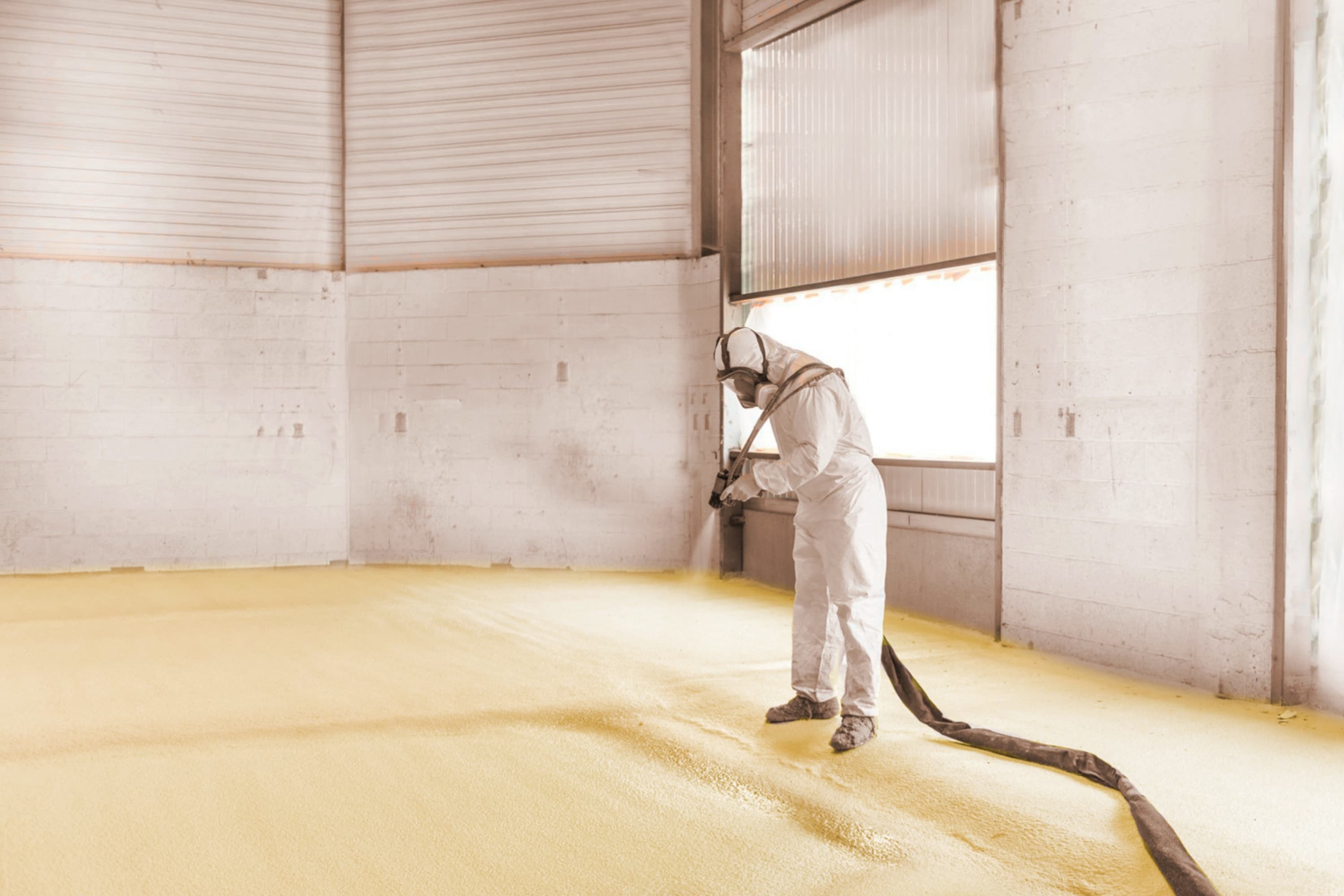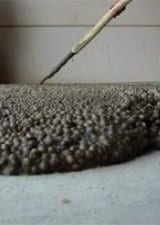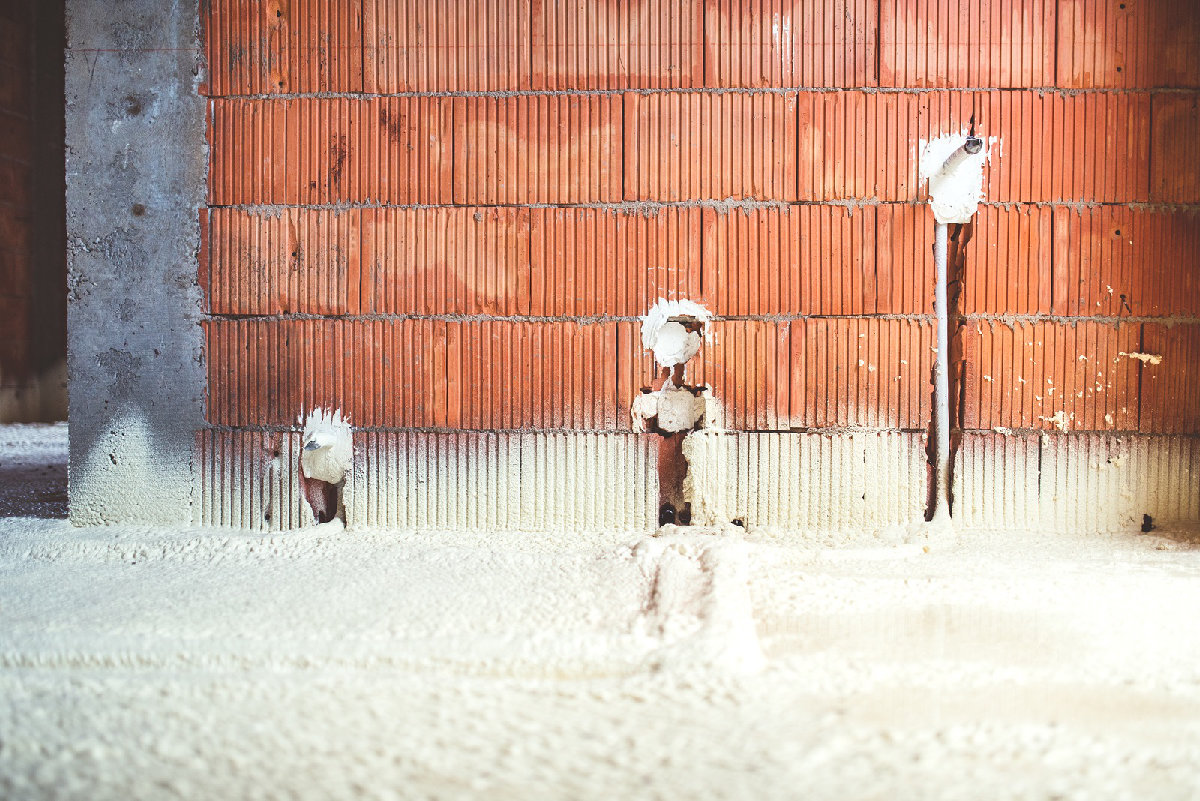Floor insulation
Floor insulation brings a lot of comfort and leads to energy savings. The temperature of a non-insulated floor lies around 11°C. By insulating the floor, you can increase the average temperature to 20°C. In this article, you can find important information about the different types of underfloor insulation and their construction.
Request non-binding quotes from specialised insulation companies?
Click here for more information.
Construction floor insulation
In order to enjoy your new floor for many years, the choice of material and a correct structure are very important. Below, you can find the most common method to construct a floor with insulation.
Layer 1 – The concrete slab: A reinforced concrete slab of at least 4 inches is essential if you want to have a qualitative floor. This slab holds back damp, it stabilizes the floor and it will prevent vermin from attacking the insulation.
Layer 2 – Construction foil and insulation: A foil is then placed directly onto the concrete. This will offer extra protection against damp. Afterwards, the insulation can be applied onto the construction foil loosely. In order to seal the edges, it is advised to use edge insulation as well. Further in this article, you can read which insulation is suitable.
Layer 3 – Pipes and screed: On top of the insulation, pipes that are required for central heating or floor heating can be put in place. As soon as these are installed, the whole can be finished with a screed layer that has a thickness of at least 3.15 inches.
Layer 4 – The finishing: Complete the screed with the preferred floor type.
Attention: There are different methods to construct a floor. In some cases, one first installs the insulation before pouring a concrete slab. Both methods have their own advantages and disadvantages.

Types of floor insulation
Each underfloor insulation material has got its own specific properties and working method. Because of this, no single job is the same and you will always have to choose a different insulation material.
Insulation boards – EPS sheets
EPS sheets, fully known as expanded polystyrene sheets, are one of the best floor insulation materials. They are easy to install and they have a high insulation value. Insulation boards have to be fixed on an even ground and they are pressure-resistant, so the floor won’t crack or collapse.
Price: £7 to £10.5 per square metre for an average thickness of 3.15 inches.
Read everything about insulation boards here.
Polyurethane spray
Polyurethane spray has the best lambda value out of all the floor insulation materials. It has a particularly good seal and it easily excludes every hole or irregularity. You cannot spray PUR yourself, as a result of which this material has a higher price than the alternative options. The main advantages of polyurethane spray are the free choice of floor insulation thickness and its quick installation.
Price: £13 to £17.5 per m² for a thickness of 3.15 to 4 inches.
Read everything about polyurethane spray here.

Insulating screed
As inferred by its name, insulation screed or insulating concrete is made of a combination of insulation material and cement. The insulation material exists of polystyrene granules with a diameter of 0.10 to 0.25 inches. Insulation screed must always be combined with another form of insulation in order to get a good insulation value.
Price: £12 to £16.5 per square metre.
Read everything about insulating screed here.
How much money can you save?
Does your house not have insulated flooring? One will then try to compensate the cold that is coming from the floor by increasing the temperature of the heater. Nevertheless, the floor will still feel chilly and the cost of your energy bill will rise drastically.
When the floor is insulated well, you can save 7 cubic metre of natural gas per square metre on an annual basis. This is equivalent to £200 – £250 a year! An insulated floor automatically reduces your energy consumption. You will experience a more enjoyable living environment in which you can walk barefoot.
Floor insulation: cost
When spending the budget, one regularly pays attention to the purchase price only. Because of this, people often do not invest enough in insulation. However, you can earn this back quickly thanks to a lower energy bill. There are also many innovative insulation techniques and grants which make the price and yield of floor insulation very interesting. Compare prices of floor insulation for your house on our quotation page.
Floor insulation for a better living environment
The average comfort temperature hovers around 20 degrees. So if you want to walk barefooted, it is important that the flooring shares the same standards. A non-insulated floor has a temperature of approximately 11 degrees. Insulation can make the temperature rise to 20 degrees.
Research on the combination of ambient temperature and floor temperature has shown that people feel uncomfortable in a house with a floor temperature below 14 degrees, even if the environment is warm (for example 24 degrees). It has been found that people generally feel most comfortable with an average ambient temperature of 20 degrees, together with a floor temperature that lies around 21 degrees.

